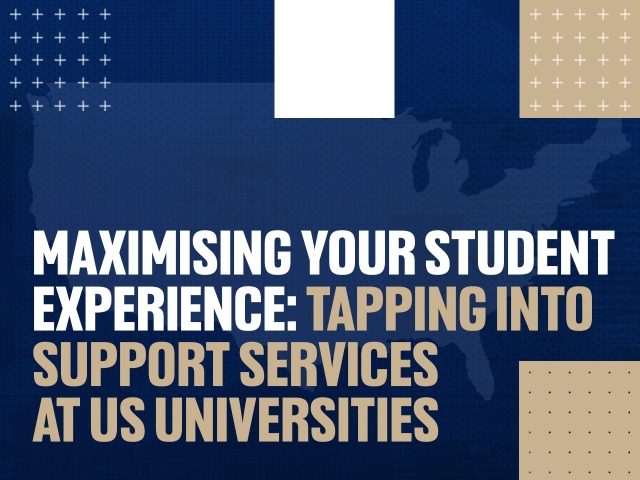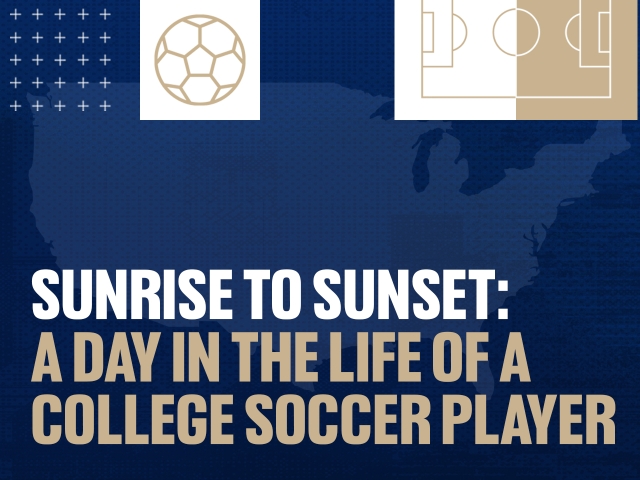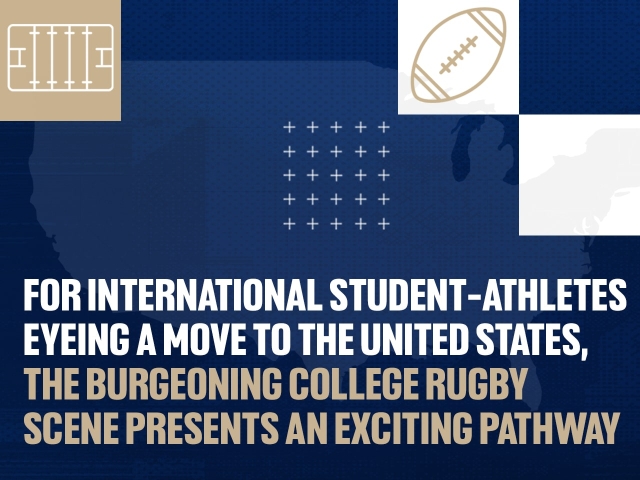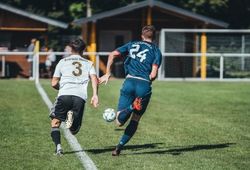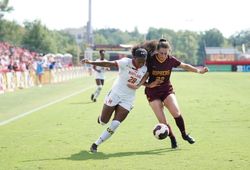Talented young skiers from all over the world are increasingly heading to the slopes of the US to experience the thrilling opportunity to combine their prowess on the snow with academic ambition by way of a college ski scholarship.
Pursuing a college ski scholarship is a demanding but rewarding journey. It requires dedication, talent, and a strong academic foundation, with elite level athletes to compete against. There are 25 NCAA funded teams, and a further 200 student-led club teams. So, while roster spots are limited, the opportunities for those who are successful are incredible.
This blog takes an in-depth look at what it takes to become a collegiate skier as we answer some of the frequently asked questions we receive from aspiring skiers aiming to progress their athletic and academic careers in the US. Let’s dive in …
Who are the most prominent college skiing programs?
Utah won the 2025 NCAA National Championships, with the Utes clinching their 16th national title and fourth in the last five years. The University of Denver has the most national titles with 24, closely followed by Colorado on 21.
Other leading programs in the East include Boston College, Dartmouth College, Harvard University, Bates College, Colby College, St. Lawrence University, Williams College, while in the west the likes of Montana State University, University of Nevada, Reno, the University of Alaska, Anchorage and Colorado Mountain College boast competitive ski programs.
How many athletes get onto each roster?
Teams will have around 8 men and 8 women and recruit one to two new racers per year per gender. In 2023, the largest NCAA team carried 14 women (Colby College) and 14 men (Boston College), while Harvard University carried the fewest with five men and five women. The smallest carried four women (Harvard University) and five men (Harvard University). In total there were around 200 NCAA registered female skiers in 2023/24 and 200 registered males in 25 NCAA programs competing in Slalom, Giant Slalom and Nordic Ski races.
What is the competition structure of college skiing?
NCAA programs will have regular training and participate in up to 30 team competitions per year, culminating in the NCAA National Championships, which in 2025 were held in Hanover, New Hampshire, hosted by Dartmouth College. Each team can field 6 skiers per race, and it is normal that freshman students may not make the team in year one for collegiate races and will instead be sent to FIS series races to gain experience.
Outwith the NCAA, an increasing number of programs affiliate USCSA, with more than 250 Alpine ski teams and 50 schools with large ski programs of roughly 20 athletes per team. USCSA skiing is team-oriented, largely student-run, inclusive and flexible. Competitions include Alpine, Nordic, snowboard, freestyle and ski jumping, however athletes do not benefit from athletic scholarships.
USCSA skiing may be partially school funded, but club dues may also be payable by students as well as their own equipment/travel costs. USCSA varsity skiing will have paid coaches whilst club skiing may have a mixture of student led/ self-coaching. Competition culminates in the USCSA Championships. There are over 5,000 USCSA skiers across 170 different colleges and universities.
What are the eligibility requirements and age timeline for NCAA skiing?
Eligibility for skiing is unlike any other NCAA sport and Skiers may delay their university start date for 3 years post high school graduation (until age 21) and still have 4 years to compete. This often makes skiers more mature than other college athletes and makes it difficult for an 18-year-old to gain a place on the roster or be recruited. There is added complexity because skiers cannot race for FIS points until they are 16+ and will likely have one winter to do so before applying to university. FIS points are a primary recruitment factor. For this reason, many skiers take at least one gap year prior to applying to a US University.
The average age of the top-10 finishers at the NCAA Championships (including the top 34 collegiate men and women nationwide), was 22 for women and 23 for men. The youngest competitors to qualify were 20 years old, and there were only two of those among the men s field. This indicates that true freshmen, those who go directly to college after high school, should not expect to be on their team s competition rosters.
Most skiers, even those without national team aspirations, take at least one gap year to improve their FIS points and increase their chances of making a college team.
What is the most important factor in recruitment?
FIS points are awarded when skiers race in Federation of International Skiing licensed events. Lower points indicate better skiers. The formula for calculating FIS points takes into consideration races from the last 12-13 months so a skier at 16 starts with high FIS points. The FIS point formula calculation takes into consideration the gap to the winner in each race. A 16-year-old will race in the U18 category and have a large gap to the winner leading to high points. Points will decrease as older better athletes race well within their age group and achieve a higher placing and smaller gap to the winner.
How many FIS points does it take to be recruited?
To ski for a top NCAA team skiers will require their best event in the region of 25-45 FIS points and their second event within 30 - 60points. Skiers with 60-80 FIS points may be recruitable for the less competitive NCAA programs Competitive USCSA skiers will have 2 events ranging 30 -150 FIS points.
What scholarships and academic funding are available for skiers?
Students with high academic standards and fast ski times are most desirable because academic and athletic scholarships can be stacked. Regardless of financial aid, all the costs associated with skiing, besides equipment, are generally covered by the university in NCAA skiing.
All universities competing under the NCAA banner, regardless of division, compete against each other in NCAA skiing as equals. However, each division has different NCAA rules and regulations around allocating scholarships and sanctioned training. Per NCAA regulation, DI and DII schools can give multi-year, cost-of-attendance full or partial scholarships. DIII schools cannot give athletic scholarships but may give merit-based scholarship for talent, leadership and ability to contribute to the university.
Universities must also follow the regulations of other consortiums to which they belong. For example, per Ivy League policy, Dartmouth and Harvard do not give merit scholarships; all tuition assistance is determined by need. Similarly, NESCAC (New England Small College Athletic Conference) schools like Bates, Colby, Williams, and Middlebury also base tuition assistance on determined need.
Some of these schools have significant subsidies for families that qualify. For example, Dartmouth has raised enough money to implement a no loans policy in which families do not have to borrow money to pay the gap between their EFC (Estimated Family Contribution) and the cost of tuition; thus, no loans. Additionally, Colby-Sawyer announced that all four-year undergraduate students in 2023-2024 will start with a tuition price of $17,500, cutting the previous year’s published cost by 45%.
Skiers may benefit from less selective academic schools with generous academic awards, with the likes of University of Denver, St. Lawrence University, St. Michael’s, and Westminster offering significant academic scholarships based on merit.
What disciplines are offered?
Alpine skiing (slalom, giant slalom, super-G, downhill) and Nordic skiing (cross-country, freestyle) are the primary disciplines.
What is the training season like for collegiate skiers?
NCAA DI programs have a 144-day season while DIII has a slightly shorter season. This can be continuous or split into two sections, with complicated rules for how days are counted. For example, Dartmouth College has an official season from approximately 1st October to 5th April and out of season NCAA rules allow them to work out six days per week, but Ivy League rules allow only five days per week, for up to six hours.
Where do college skiers typically come from?
The US is the only country where collegiate ski teams are fielded and funded, making roster spots highly coveted and competitive, with global appeal. At one of the recent NCAA Championships, international athletes accounted for 65% of men and 80% of the women in the entire field, securing 85% of the top-10 spots for women, and 70% for men. Across all available roster spots, 34% are non-US athletes, with a high proportion coming from Scandinavia and Canada.
What are the benefits of being part of an NCAA collegiate ski program?
· Affordability/Accessibility: The in-season costs borne by college teams (travel, training, entry fees) allows athletes who might otherwise not be able to afford to continue their development to do so.
· Four-year program: A guaranteed four-year runway allows athletes to mature and evolve their technique and improve their rankings without the pressure to constantly qualify for a spot.
· Team Environment: The supportive team atmosphere allows athletes to stay positive, feel productive and enjoy the sport, which often rejuvenates and inspires them to develop further in the sport. Athletes may travel together to up to 30 team competitions per season.
· Consistency and mental strength: The premium on finishing races, within a highly competitive field, leads to more grit and consistency. Collegiate racers who have broken through to the World Cup often mention that the pressure to finish well for their teams in the NCAA Championships is greater than any starting gate pressure they have experienced.
· High level of competition: 13 current NCAA skiers skied at the last Winter Olympics
Which famous skiers have come through college programs?
The former CEO of US Ski & Snowboard Tiger Shaw was part of the successful Dartmouth College team while Olympic medallist and World Champion Billy Kidd came through the University of Colorado Boulder. Three-time US Olympian and multiple national champion Kristina Koznick was a student-athlete at the University of Vermont.
If you’re an aspiring skier with an interest in pursuing a scholarship in the US, and have the combined athletic and academic prowess, you can kick off your journey by registering with FirstPoint USA today.
